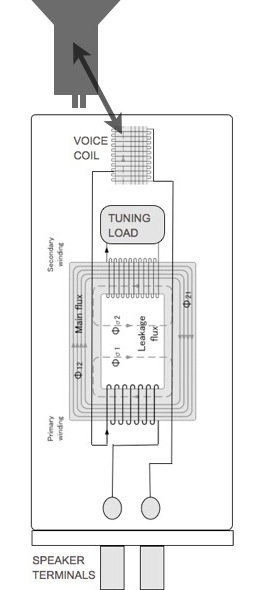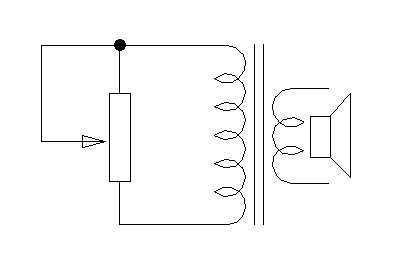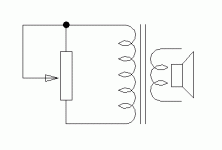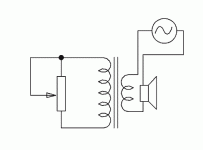>>> but nothing magical can happen...
I've spent years searching for magic and haven't found it. Maybe one day in the future I will happen upon it... for now just enjoying music within the limitations of my system and listening space is pleasure enough. I feel badly for the guy who buys those $35K Dynaudio's only to trade them in next year for a $45K pair of Wilson's... then the $85K Focal's... until he gives up on hi-fi altogether. And the amps required to drive those things correctly, uhg! My back hurts just thinking about them!
Are you saying Decware repackages someone else'e electronics in that DAC photo? Backward engineering the Decware driver seems interesting... wonder what we'll find in that canister? Wonder if the thicker surround has purpose other than appearance? Following the chart Dave posted and reading Scott's comments, yes, i do see where the niggles and jiggles follow the stock driver's response. Perhaps a comparison between the Decware and a stock driver tweaked is in order. Too bad the prices are so hi for the Decware. Most will never experience it... Maybe it will sound like magic?
I've spent years searching for magic and haven't found it. Maybe one day in the future I will happen upon it... for now just enjoying music within the limitations of my system and listening space is pleasure enough. I feel badly for the guy who buys those $35K Dynaudio's only to trade them in next year for a $45K pair of Wilson's... then the $85K Focal's... until he gives up on hi-fi altogether. And the amps required to drive those things correctly, uhg! My back hurts just thinking about them!
Are you saying Decware repackages someone else'e electronics in that DAC photo? Backward engineering the Decware driver seems interesting... wonder what we'll find in that canister? Wonder if the thicker surround has purpose other than appearance? Following the chart Dave posted and reading Scott's comments, yes, i do see where the niggles and jiggles follow the stock driver's response. Perhaps a comparison between the Decware and a stock driver tweaked is in order. Too bad the prices are so hi for the Decware. Most will never experience it... Maybe it will sound like magic?
I suspect Steve has added a couple of extra notch filters to the circuit to flatten out the ~3.5KHz & ~16KHz peaks too, although his extra roll-surround may have damped some cone resonances.
I REALLY hope no Passive parts are used besides the transformer and single resistor.
If those peaks are energy storage, this sort of current equalization could actually tame them.
I think the can has to be opened... One of the reasons I like FR is to NOT have a passive XO.
Here is an extract from a Joe list post that may have some useful clues as to function, and things to keep in mind. It is also amusing.
dave
when "damping" became the rage in amp design, and positive feedback schemes were even arranged to provide a "negative" output impedance for the speaker (the output voltage rose as the current draw increased), all sorts of wonderful claims were made about "braking" and "overshoot control" and the general superiority of a low damping factor (or even a negative one). its good to remember this, i think. not that there is nothing wrong with the back emf of the speaker looking "back" into a "short circuit" or clever damping network. the truth is, these amps never really had much of an effect on the speaker. if the speaker was a sealed box, it sounded leaner, and if it was a reflex, it still rang and woofed. think of a crystal wine lass... if you clink it with your finger nail, it rings like a bell. touch the edge with your finger and do it, it just clicks (sealed box). now imagine a reflex box (tupperware soup container). if you lick it with your finger nail it goes "thuck". now damp it with your inger it goes "thuck". not much of an improvement. the best thing about these amps was that the extra low Z did help prevent the back emf from screwing up the feedback loop as much as it did in an amp without the tricks. the one i can think of fondly, off the back of my hand is the ACRO ULII. great amp for modifying... whatever.
okay, so using a passive device to "damp" the back emf of a completely ordinary traditional dynamic speaker driver (which this clearly is) has a pedigree... (its been attempted before), you could even link back to the work done in the 1950's on damping the speaker with an amp... to show continuity, and then claim it was much more better to do it passively (with an inductive network...uhhh....), then it was to try and do it actively, which if it worked at all, we'd all be building krells or "blameless" SS amps to deal with it anyway. why a damping factor of 200 ought to be enough for anyone?! before i let my innate cynical contrarian run away with the ball, let me also point out the rest of the marketing... the added inductance rolls off highs by increasing the impedance as frequency rises... this is "equalized" by adding pre-emphasis to the design of the driver (its "ultra light and fast"), nee bright and nasty without the inductor... all so that you can take advantage of the negative regulation of the choke in terms of damping. it is "choke input", after all.... in the end, its still an 8" "full range driver" with a whizzer. hell, ******* fostex makes a good one with an honest to goodness alnico magnet for slightly less money and it has the same bandwidth without the network. it still sucks off axis just like this one does... for crying out loud, its a ******* cone speaker like ANY other. it works with the same physics as they all do. okay, he gets some credit for trying to reinvent the wheel in a way not often seen, but its still just a wheel. i will bet the cost of a pair it's no "better" than a WE 755 or a fostex FE208 (better bass and more highs than a western, but not as good in the middle or the top), and probably not anywhere near as good. comparing it to a lowther is no comparison at all because they suck unless in a very particular context. and you like them (don't).
dave
I wonder if the FRX might use an enhanced version of the Gizmo.
I think you might be onto something. Hook the speaker to the speaker side (2ndary) of an SE OPT and a 100k pot (i got one of those) with the wiper connected to one end to the primary. Now i just need to find a driver with a rising response.
Note: the 9800R secondary impedance in the gizmo corresponds pretty well to a ZEN OPT.
dave
Attachments
Now i just need to find a driver with a rising response.
I think the Audio Nirvana Super 8 has a fairly pronounced rising response...
I wonder if the FRX might use an enhanced version of the Gizmo.
It is something I though as well. As a rude experiment, and it did have an effect, was to open a drawer and do a quick-and-dirty experiment with parts on hand.
I took a 50 w, 220v/12 v transformer. Across 220v winding I connected a 20 K pot, while 12v winding was connected in series with Fostex FE 206 in ML TL and SS amp. By moving a pot there was a change of balance, the sound became less shouty. I measured the pot value and then substituted it with fixed 7.5 K resistor. I believe this will work even better with an air-gapped transformer, but resistor value might change depending on the transformer ratio, and here might be "the catch" (i.e. determining the best winding ratio and resistor value) which is what I believe that Steve has achieved through experimenting and critical listening.
Anyway, shouldn't be too hard to try
I think the Audio Nirvana Super 8 has a fairly pronounced rising response...
Conveinently i happen to have a set of those here, thanx TY.
I just talked with Daniel about the gizmo circuit. He was instantly able to explain how it functions. Basically a 1st order LR circuit -- a tilt control.
dave
I wonder if the FRX might use an enhanced version of the Gizmo
Gizmos sell for $215/pr (uses my favorite (affordable) binding posts)
dave
So $400 per driver for a fancy coffee can to cover the works...
But won't the wiring be a little different, or am I just misinterpreting Steve's drawing?
impedance will be reflected by the transformer.

Where he says air gapped transformer, my mind immediatly thot of the transformers from his SE amps. A ZEN OPT would fit nicely in that can.
dave
I think you might be onto something. Hook the speaker to the speaker side (2ndary) of an SE OPT and a 100k pot (i got one of those) with the wiper connected to one end to the primary. Now i just need to find a driver with a rising response.

Note: the 9800R secondary impedance in the gizmo corresponds pretty well to a ZEN OPT.
dave
But won't the wiring be a little different, or am I just misinterpreting Steve's drawing?
Last edited:
Have you priced a "fancy coffee can" lately? They aren't inexpensive.
Paul
Wild Burro Audio Labs - DIY Full Range Speakers
Paul
Wild Burro Audio Labs - DIY Full Range Speakers
Have you priced a "fancy coffee can" lately? They aren't inexpensive.
Paul
Wild Burro Audio Labs - DIY Full Range Speakers
how much of this do the boys in the shop need to drink for each pair shipped?
Most Expensive Coffee in the World
But won't the wiring be a little different, or am I just misinterpreting Steve's drawing?
Finishing off the drawing should make it clear that they are the same, with the variable pot being the tuning load.
dave
Attachments
Finishing off the drawing should make it clear that they are the same, with the variable pot being the tuning load.
dave
Thanks Dave. I was just seeing it wrong originally. Probably part of Steve's marketing, to make it look more complicated than it is...
What about the many paragraphs of verbage in the principals of operation to say "we add a transformer coupled circuit that acts as an LC filter"
dave
Now you want me to read? I just look at the pretty pictures. I do the same thing with a few magazines too.
But in all seriousness, I'll order Edcors and use my little single gang pots from the OptiVol kits since I bought Blue Velvets for them just for the feel. I'm assuming that since it's just a load and not in the signal path, a low cost Alpha pot is fine. I can match the load values once I get it close to where it sounds the best.
- Status
- This old topic is closed. If you want to reopen this topic, contact a moderator using the "Report Post" button.
- Home
- Loudspeakers
- Full Range
- New FRX OB driver from Decware

